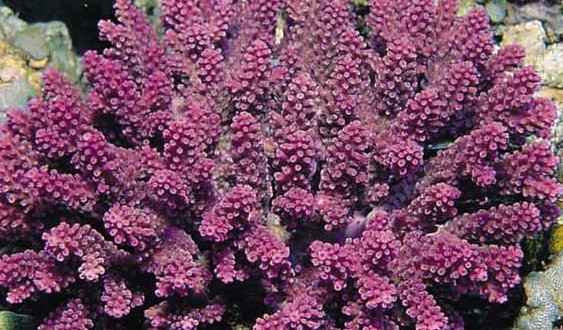The US National Oceanic and Atmospheric Administration (NOAA) announced on Tuesday that 20 new types of coral reef species have been listed as protected under the Endangered Species Act (ESA).
“Coral reefs are one of the most biologically diverse ecosystems on earth, providing habitat for many marine species. Protecting and conserving these biologically rich ecosystems is essential, and the Endangered Species Act gives us the tools to conserve and recover those corals in most need of protection,” said Eileen Sobeck, assistant NOAA administrator for NOAA Fisheries. “The final decision is a result of the most extensive rulemaking ever undertaken by NOAA. The amount of scientific information sought, obtained and analyzed was unprecedented.”
Today’s announcement is a significant change from the proposed rule in November 2012. Since that time, many new scientific papers on climate change and coral habitat, distribution and abundance were published so that NOAA was able to consider and incorporate new information into the final decision. NOAA also considered extensive public comments as part of the final rule making.
The new information provided after the proposed rule was published strengthened the body of species-specific information available to NOAA for its final determination. The new information also improved the agency’s understanding of coral habitat diversity, abundance, distribution and species-specific exposure to threats and their relative vulnerability or resilience.
“We want to thank our stakeholders and partners for their strong participation at each step of this process, and we look forward to working with the states, territories, commonwealths, local governments and all our stakeholders and partners to conserve these coral species and ensure they remain for future generations to enjoy,” said Sobeck.
NOAA will continue to work with communities to help them understand how the agency’s decision may or may not affect them. The tools available under the Endangered Species Act are sufficiently flexible so that they can be used for partnerships with coastal jurisdictions, in a manner that will allow activity to move forward in a way that does not jeopardize listed coral. Currently no prohibitions exist relating to the newly listed species.
Coral reefs are critical to the health of marine ecosystems, and they face severe threats. Coral reefs world-wide have declined significantly-some individual species have declined by up to 98 percent. Healthy coral reefs provide shoreline protection for coastal communities and habitat for a variety of species, including commercially important fish. These benefits are lost when corals are degraded.
As part of this rule-making process, NOAA identified a number of threats to coral ecosystems. Some of the most serious threats include impacts related to climate change (rising ocean temperatures, ocean acidification and disease), ecological effects of fishing, and poor land-use practices.
NOAA will work with partners on mitigation measures and recovery plans for the newly listed corals. These will likely include approaches that have shown success elsewhere, such as watershed management, to address land-based sediment pollution in the U.S. Virgin Islands and Hawaii, and restoration efforts in the Southeast where NOAA and partners are transplanting corals grown in nurseries to help recover degraded reefs.
Agencies/Canadajournal
 Canada Journal – News of the World Articles and videos to bring you the biggest Canadian news stories from across the country every day
Canada Journal – News of the World Articles and videos to bring you the biggest Canadian news stories from across the country every day



